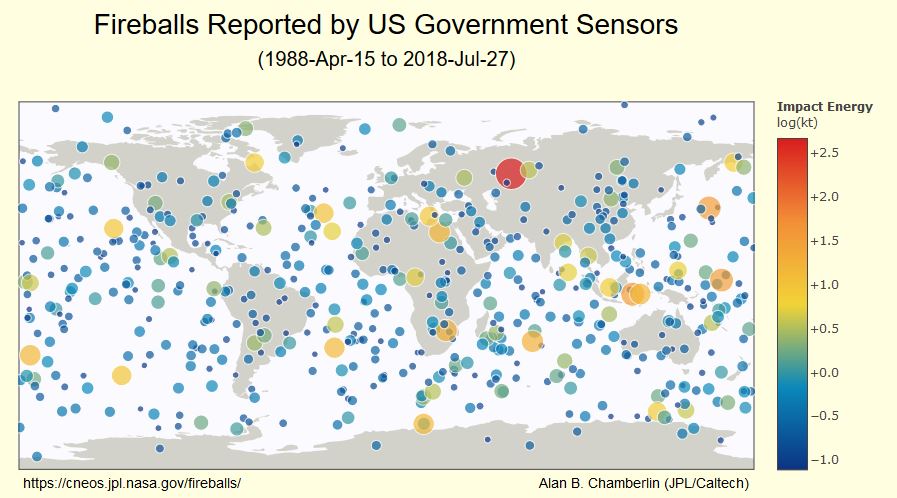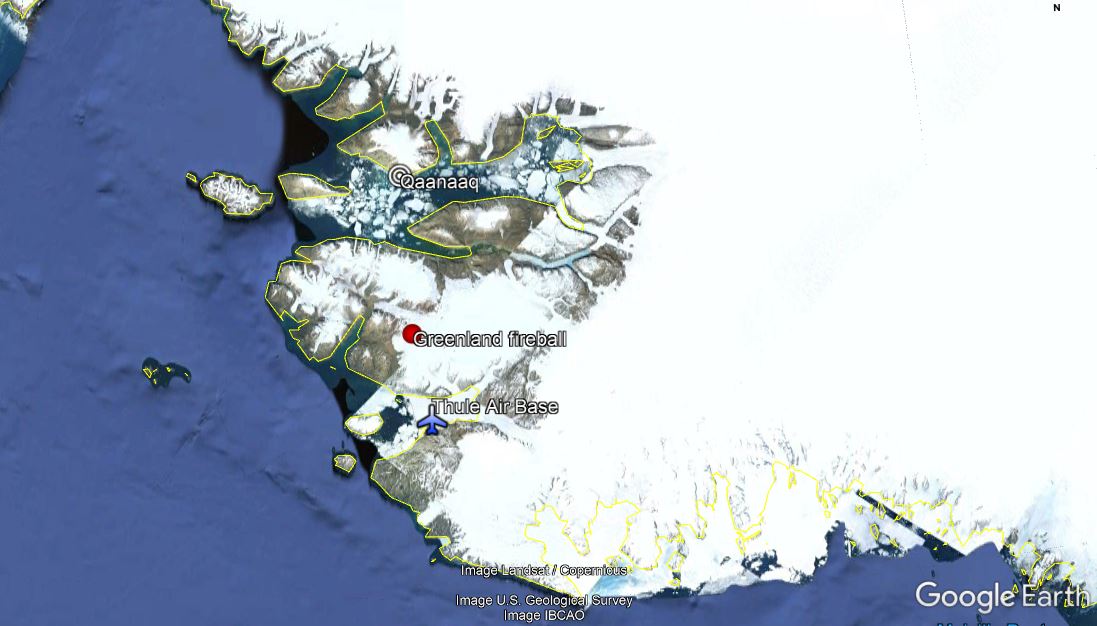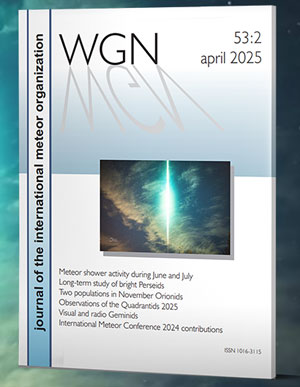On July 25, 2018, at 21h55 UT, the second most energetic fireball of the past 7 months of 2018 was recorded over North-Western Greenland. With a calculated impact energy of 2.1 kt of TNT, it was slighlty less energetic than the Russian daytime event on June 21st, 01h16 UT, (which calculated energy ranged to 2.8 kt of TNT).

A fireball was detected over Greenland on July 25, 2018 by US Government sensors at an altitude of 43.3 km. The energy from the explosion is estimated to be 2.1 kilotons. pic.twitter.com/EePuk14Pqd
— Rocket Ron 🚀 (@RonBaalke) July 31 2018
The meteoroid entered the atmosphere at a 24 km/s speed. The altitude of the final explosion was calculated to be around 43 km, at coordinates (lat. ~ 76.9°N ; lon. ~ 69.0° W), which is over the North-Western coast of the country, at a 30 km horizontal distance from the sea.

Explosion occured 40 km North of the American Thule Air Base, and was reported by several inhabitants from the nearby village of Qaanaaq, located 60 km North of the terminal explosion. The close proximity to this AirForce Base leads to very fast checks that it was not a Russian missile, which proves not to be.
Meteor explodes with 2.1 kilotons force 43 km above missile early warning radar at Thule Air Base. https://t.co/qGvhRDXyfK
HT @CasillicWe’re still here, so they correctly concluded it was not a Russian first strike. There are nearly 2,000 nukes on alert, ready to launch. pic.twitter.com/q01oJfRUp4
— Hans Kristensen (@nukestrat) August 1st 2018
No visual reports were recorded by the International Meteor Organization so far. If you observed or recorded this meteoric event, please don’t hesitate to fill in the Online Fireball Report Form. It’s fast, easy, and does not require any knowledge in science or astronomy!




 You saw something bright and fast? Like a huge shooting star? Report it: it may be a fireball.
You saw something bright and fast? Like a huge shooting star? Report it: it may be a fireball.  You counted meteors last night? Share your results with us!
You counted meteors last night? Share your results with us!  You took a photo of a meteor or fireball? You have a screenshot of your cam? Share it with us!
You took a photo of a meteor or fireball? You have a screenshot of your cam? Share it with us!  You caught a meteor or fireball on video? Share your video with us!
You caught a meteor or fireball on video? Share your video with us!